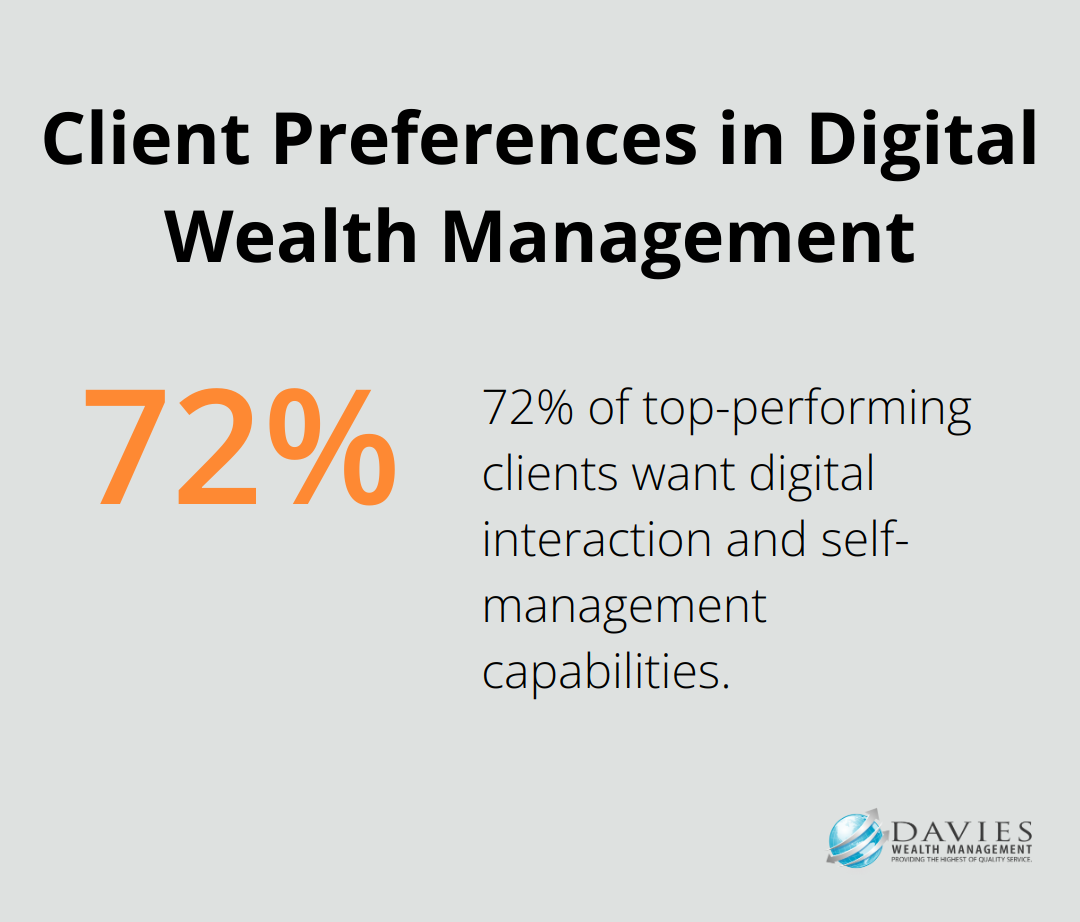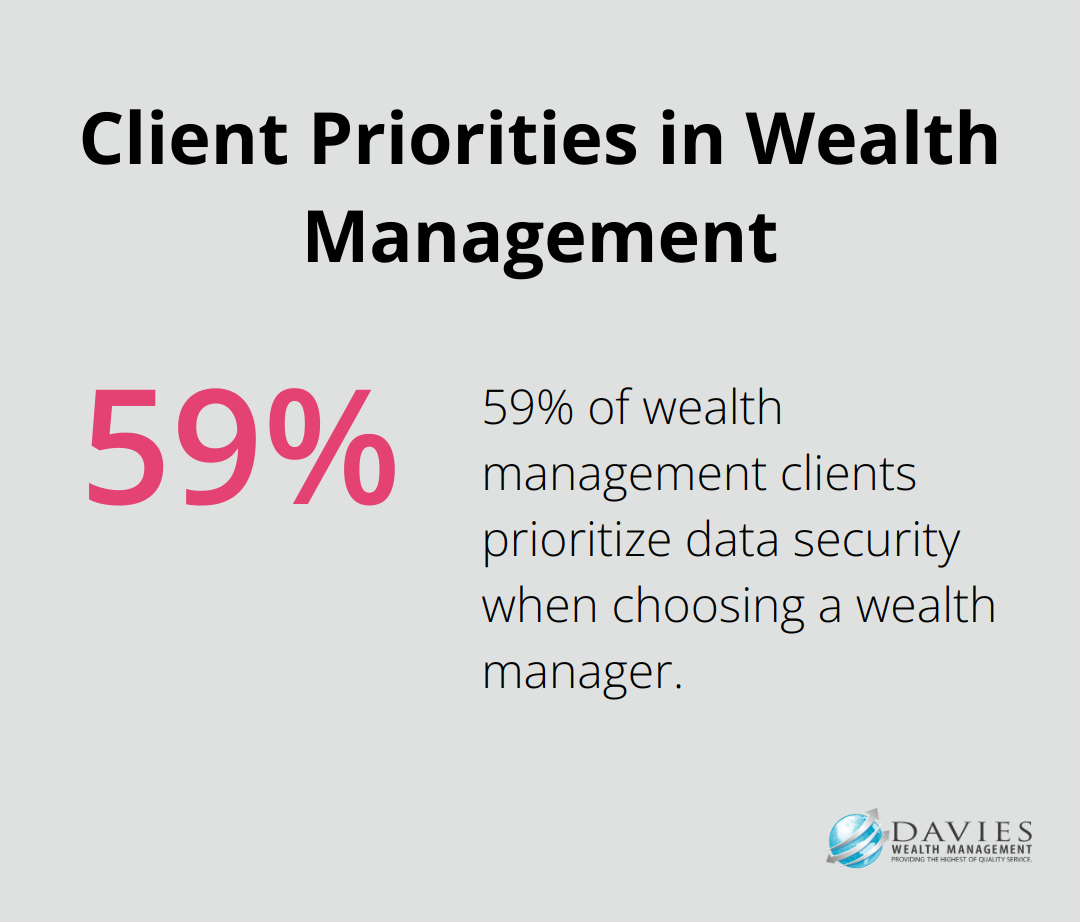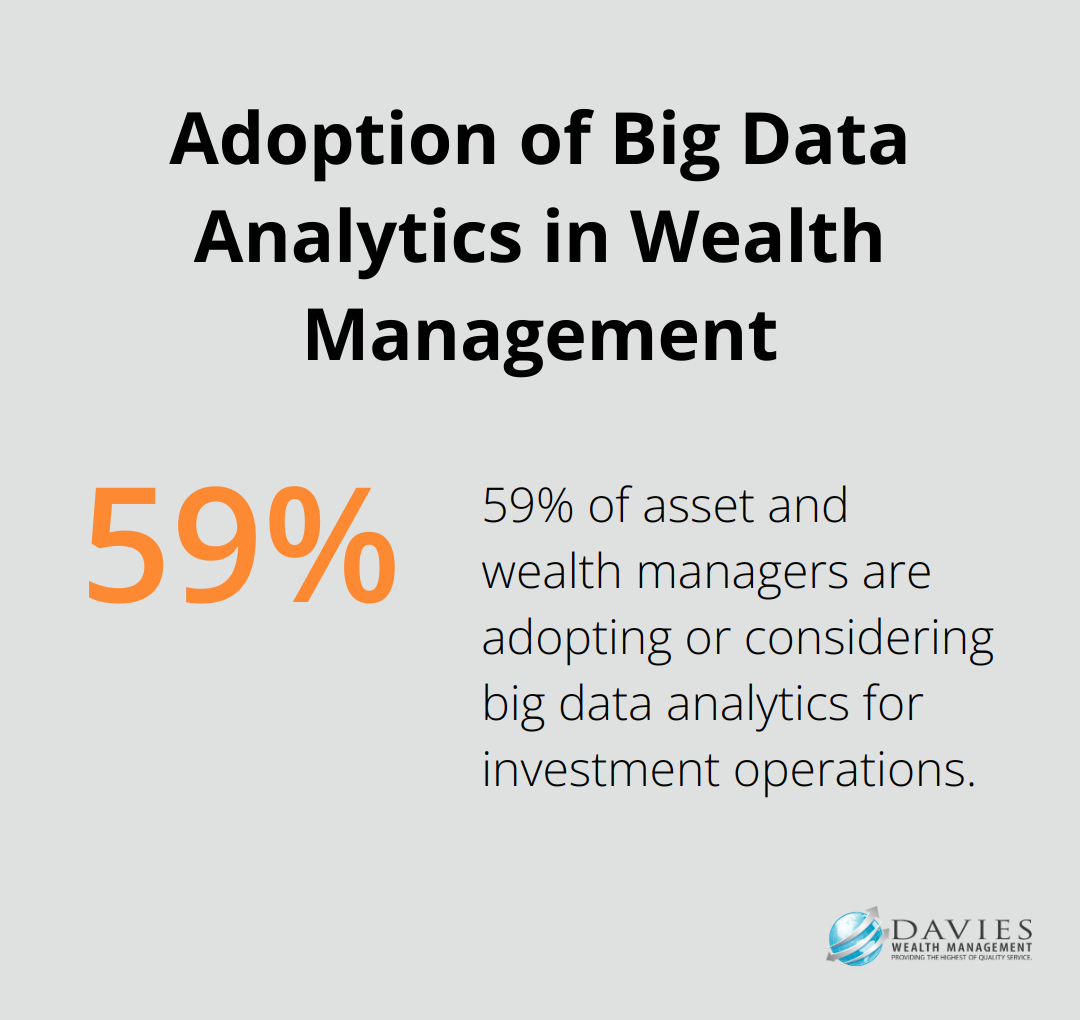The digital revolution has transformed wealth management, reshaping client expectations and industry practices. At Davies Wealth Management, we’ve witnessed firsthand how technology is redefining the way financial services are delivered and consumed.
Creating a robust wealth management digital strategy is no longer optional-it’s a necessity for firms looking to thrive in this new landscape. This blog post will guide you through the essential steps to develop and implement a digital strategy that enhances client experiences, leverages cutting-edge technologies, and positions your firm for future success.
What’s Shaping Digital Wealth Management Today?
The digital landscape in wealth management continues to evolve rapidly. Let’s explore the key factors driving this digital transformation.
The Rise of Personalized Digital Experiences
Today’s wealth management clients demand personalized, on-demand services. Expanding personalized financial advice and wealth management offerings tailored to their needs is crucial for delighting next-generation high-net-worth individuals, extending reach, and fostering loyalty. This trend has spurred the development of sophisticated client portals and mobile apps that offer real-time portfolio information, personalized insights, and seamless communication channels.
AI and Machine Learning: The New Frontiers
Artificial Intelligence (AI) and Machine Learning (ML) revolutionize wealth management. These technologies enable firms to analyze vast amounts of data to generate more accurate investment predictions and personalized recommendations. For example, BlackRock’s Aladdin platform unifies the investment management process through a common data language, helping managers make more informed investment decisions.
The Integration of Robo-Advisors
Robo-advisors have become a significant force in the industry. These automated investment platforms use algorithms to create and manage portfolios, offering a low-cost alternative to traditional advisory services. The impact of AI on various areas of finance, including investment banking and wealth management, continues to grow.
Cybersecurity: A Top Priority
As wealth management becomes increasingly digital, cybersecurity takes center stage. The financial sector remains a prime target for cyberattacks. Wealth management firms now invest heavily in advanced security measures to protect client data and maintain trust.
The Demand for Financial Education
Digital platforms serve not just for transactions; they increasingly become educational hubs. Clients, especially younger generations, seek financial literacy resources from their wealth managers. This demand has led to the development of interactive learning tools, webinars, and personalized educational content delivered through digital channels.
These digital trends shape the future of wealth management, pushing firms to adapt and innovate. The next section will explore the essential components of a digital wealth management strategy that leverages these trends to enhance client experiences and drive business growth.
Essential Components of a Digital Wealth Management Strategy
Personalized Digital Experiences
The foundation of an effective digital strategy is a seamless, personalized client experience. This extends beyond offering a mobile app or online portal. It involves creating a digital ecosystem that anticipates and meets client needs at every touchpoint.
Many wealth management firms implement AI-driven chatbots to handle routine inquiries, which frees up human advisors for more complex discussions. Client portals often offer real-time portfolio updates, interactive goal-tracking tools, and personalized investment insights.

Data Analytics and AI Integration
Data analytics and artificial intelligence revolutionize wealth management. These technologies enable firms to analyze vast amounts of data to generate more accurate investment predictions and personalized recommendations.
Machine learning algorithms analyze market trends, client behavior, and risk profiles. This allows wealth managers to offer more tailored investment strategies and proactively adjust portfolios based on changing market conditions. According to BCG’s survey of C-suite executives, AI remains a top priority for business leaders worldwide in 2025, with a strong focus on generating tangible results.
Robust Cybersecurity Measures
As wealth management becomes increasingly digital, strong cybersecurity measures are essential. Many firms implement multi-factor authentication, end-to-end encryption, and regular security audits to protect clients’ sensitive financial data.
Investment in employee training programs ensures teams are well-versed in the latest cybersecurity best practices.

Hybrid Advisory Models
The integration of robo-advisors with human expertise represents the future of wealth management. Many firms (including Davies Wealth Management) develop hybrid models that combine the efficiency of automated investing with the nuanced understanding of human advisors.
Robo-advisory platforms often handle routine portfolio rebalancing and tax-loss harvesting, while human advisors focus on complex financial planning, estate planning, and providing emotional support during market volatility. This approach allows firms to serve a broader range of clients while maintaining the high-touch service that high-net-worth individuals expect.
According to Accenture, the question becomes whether the hybrid experiences available today are delivering quality advice when clients need it and if they are delivering the right outcome.
These key components form the backbone of a successful digital wealth management strategy. They enhance client experiences, improve operational efficiency, and position firms for future growth. The next section will explore how to implement these components effectively within your organization.
How to Implement Your Digital Wealth Management Strategy
Assess Your Current Digital Capabilities
The first step in implementing your digital strategy requires a comprehensive audit of your existing digital capabilities. This involves an evaluation of your current technology stack, identification of gaps in your digital offerings, and an understanding of your team’s digital proficiency.
A full 59% of asset and wealth managers are currently adopting or considering big data analytics for their investment operations. This assessment should cover everything from your client-facing digital platforms to your back-office systems.
Set Clear, Measurable Goals
After you assess your current state, you must set clear, measurable goals for your digital strategy. These goals should align with your overall business objectives and address the gaps identified in your assessment.
For example, you might try to increase client engagement by 30% through your digital platforms within the next year, or reduce operational costs by 20% through the implementation of AI-driven processes.

Modern wealth management platforms drive business value by providing elegant digital solutions.
Choose Strategic Technology Partners
The selection of the right technology partners is critical to the success of your digital strategy. Look for partners with a proven track record in the wealth management industry and a deep understanding of the unique challenges and opportunities in this space.
When you evaluate potential partners, consider factors such as their ability to integrate with your existing systems, their commitment to ongoing innovation, and their approach to data security.
Upskill Your Team
Your team forms the backbone of your digital strategy implementation. Investment in their digital skills is essential for success. This involves not only training on new technologies but also the fostering of a culture of digital innovation and continuous learning.
Consider the implementation of a comprehensive digital training program for your advisors and support staff. This might include workshops on using new digital tools, courses on data analytics, or seminars on cybersecurity best practices.
Measure, Learn, and Iterate
The implementation of a digital strategy is not a one-time event but an ongoing process of measurement, learning, and iteration. Establish key performance indicators (KPIs) that align with your goals and regularly track your progress against these metrics.
Use tools to monitor client engagement on your digital platforms. Track metrics such as time spent on your website, frequency of app usage, and conversion rates for digital services. Regular solicitation of feedback from both clients and team members will help identify areas for improvement.
The digital landscape in wealth management continues to evolve. Stay informed about emerging technologies and industry trends, and prepare to adjust your strategy as needed. These steps (and a commitment to continuous improvement) can lead to the successful implementation of a digital strategy that enhances client experiences, improves operational efficiency, and drives growth for your wealth management firm.
Final Thoughts
A wealth management digital strategy transforms how firms operate in today’s financial landscape. It encompasses personalized experiences, AI integration, and robust security measures to meet evolving client expectations. Firms must assess their capabilities, set clear goals, and choose strategic partners to implement these digital innovations effectively.
The future of digital wealth management promises further advancements in AI-driven personalization and sophisticated robo-advisory services. Firms that embrace these innovations while maintaining the human touch will thrive in this dynamic environment. Adaptability remains key as new technologies emerge and client expectations continue to evolve.
At Davies Wealth Management, we leverage cutting-edge technology to provide comprehensive wealth management solutions. Our team stands ready to help you navigate the complex world of wealth management in the digital age (whether you’re a professional athlete with unique financial needs or an individual seeking to secure your financial future).



Leave a Reply